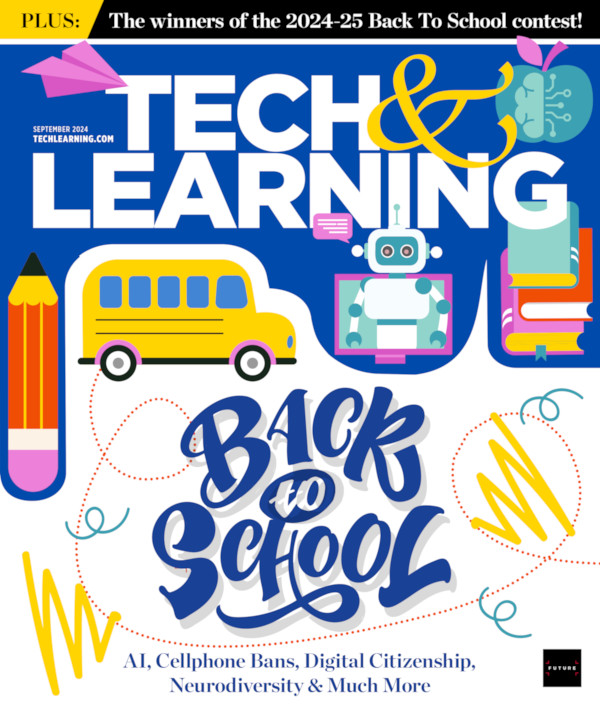Driving Tech Innovation – Hamilton College

Report on Hamilton College Alumni Contributions to Digital Entrepreneurship and Sustainable Development Goals
Executive Summary
Alumni of Hamilton College have been instrumental in the development of the global digital economy since the inception of the World Wide Web. By founding and leading transformative technology companies, these individuals have made significant contributions to several of the United Nations Sustainable Development Goals (SDGs). Their success is largely attributed to a liberal arts education that fosters critical thinking, adaptability, and communication. This report analyzes these contributions, with a specific focus on SDG 4 (Quality Education), SDG 8 (Decent Work and Economic Growth), SDG 9 (Industry, Innovation, and Infrastructure), and SDG 10 (Reduced Inequalities).
Advancing Industry, Innovation, and Economic Growth (SDG 8 & SDG 9)
Hamilton alumni have consistently been at the forefront of technological innovation, establishing and scaling companies that define modern digital infrastructure. These entrepreneurial activities directly support SDG 9 by building resilient infrastructure and fostering innovation, and SDG 8 by promoting sustained, inclusive economic growth and creating decent work.
- Marc Randolph ’81, co-founder of Netflix, revolutionized the media distribution industry, creating a global streaming platform that serves as a major component of today’s digital infrastructure.
- Dan Nye ’88, as CEO of LinkedIn, transformed the platform into a vital business-oriented social network, fundamentally altering professional networking and recruitment, thereby contributing to global economic systems.
- Blake Darcy ’78, founder of DLJdirect, pioneered online financial services by providing customers with direct, real-time access to brokerage information, a foundational innovation for the modern FinTech industry.
Other alumni have played key roles in a wide range of influential technology firms, including:
- Zillow
- PayPal
- Peloton
- Spotify
- Grammarly
The creation and expansion of these companies have generated thousands of jobs and stimulated significant economic growth, directly aligning with the objectives of SDG 8.
The Foundation of Quality Education (SDG 4)
The success of these digital entrepreneurs is consistently linked to the quality education received at Hamilton College. The institution’s liberal arts curriculum emphasizes skills essential for navigating the rapidly changing technology sector, embodying the principles of SDG 4, which aims to ensure inclusive and equitable quality education and promote lifelong learning opportunities for all.
Key skills developed include:
- Problem-Solving: The ability to break down complex problems and engage in critical, analytical thinking.
- Communication: The capacity for clear, concise, and persuasive communication, which is crucial in technical environments.
- Adaptability: A cultivated resourcefulness and flexibility, described as being “prepared for everything,” which is vital for the innovation economy.
To further this commitment to SDG 4, Hamilton College is constructing a new innovation center. Key details include:
- Investment: $50 million
- Size: 41,000 square feet
- Completion: 2027
- Purpose: To house the Computer Science Department, provide makerspaces, and integrate computing and AI across all academic disciplines, preparing the next generation of innovators.
Leveraging Technology to Reduce Inequalities (SDG 10)
Several innovations led by Hamilton alumni have contributed to SDG 10 by reducing inequalities in access to information and opportunity. By democratizing access to previously exclusive systems, these technologies promote greater inclusion.
Blake Darcy’s founding of DLJdirect serves as a primary example. By utilizing early internet platforms like Prodigy and AOL, his firm empowered individual investors with real-time market data, challenging a financial industry model that restricted such information to brokers. This move helped democratize access to financial markets, a key step in reducing economic inequalities.
Strategic Partnerships for Future Innovation (SDG 17)
The continued advancement of these goals is supported by strong partnerships, a principle central to SDG 17 (Partnerships for the Goals). The development of the new campus innovation center is a testament to this, driven by the active involvement and support of alumni like Hamilton trustee Dan Nye. This collaboration between the college, its alumni, and industry leaders ensures that educational infrastructure evolves to meet the demands of the future digital economy, strengthening the means of implementation for sustainable development.
Which SDGs are addressed or connected to the issues highlighted in thearticle?
- SDG 4: Quality Education – The article emphasizes how Hamilton College’s liberal arts education equips students with critical skills for the modern economy.
- SDG 8: Decent Work and Economic Growth – The article highlights entrepreneurship, the creation of major companies, and the growth of the “innovation economy.”
- SDG 9: Industry, Innovation, and Infrastructure – The article is centered on digital innovation, technological entrepreneurship, and the development of physical infrastructure (an innovation center) to support these activities.
What specific targets under those SDGs can be identified based on the article’s content?
SDG 4: Quality Education
- Target 4.4: By 2030, substantially increase the number of youth and adults who have relevant skills, including technical and vocational skills, for employment, decent jobs and entrepreneurship.
- Explanation: The article repeatedly states that Hamilton’s education provides skills ideal for the innovation economy. Dan Nye ’88 notes that skills like “resourcefulness and adaptability” are crucial, and that he was “prepared to break down problems and think critically and analytically.” Marc Randolph ’81 credits the college for allowing him to take “creative risks” and learn how to “ask for money and enlist people,” which prepared him for entrepreneurship.
SDG 8: Decent Work and Economic Growth
- Target 8.2: Achieve higher levels of economic productivity through diversification, technological upgrading and innovation.
- Explanation: The entire article is a testament to technological innovation driving economic activity. It profiles alumni who founded or grew companies like Netflix, LinkedIn, and DLJdirect, which transformed their respective industries through technology. Dan Nye’s work at LinkedIn, for example, “transformed the company from a résumé-posting site to a vibrant business-oriented social network.”
- Target 8.3: Promote development-oriented policies that support productive activities, decent job creation, entrepreneurship, creativity and innovation.
- Explanation: The article celebrates the entrepreneurial spirit of Hamilton alumni. Marc Randolph is described as a “serial entrepreneur” even at college. Blake Darcy ’78 founded DLJdirect, a pioneering online brokerage firm. The article showcases how their creativity and innovation led to the formation and growth of major enterprises.
SDG 9: Industry, Innovation, and Infrastructure
- Target 9.5: Enhance scientific research, upgrade the technological capabilities of industrial sectors in all countries…and encourage innovation.
- Explanation: The article describes the creation of a new “$50-million, 41,000-square-foot innovation center” at Hamilton. This center is explicitly designed to “encourage faculty to integrate computing and artificial intelligence into lessons” and “better equip the next generation of digital entrepreneurs,” directly contributing to enhancing research and encouraging innovation.
- Target 9.c: Significantly increase access to information and communications technology.
- Explanation: The article discusses the foundational work of alumni in increasing access to information via the internet. Blake Darcy’s motivation for founding DLJdirect was to solve the problem of getting “customers’ information about the market in real time so they could make informed decisions.” His firm used platforms like Prodigy and AOL to provide this access, setting the stage for modern online financial services.
Are there any indicators mentioned or implied in the article that can be used to measure progress towards the identified targets?
Indicators for SDG 4 (Target 4.4)
- Number of graduates with entrepreneurial skills: The article implies this is a key outcome of the education, citing Marc Randolph ’81 who said, “By the time I started doing it for real, I’d already been doing it for four years at school.”
- Number of graduates in technology and innovation sectors: The article lists numerous alumni who have “parlayed their liberal arts education into a technology startup or venture capital firm,” mentioning roles in Zillow, LinkedIn, PayPal, Peloton, Spotify, and Grammarly.
Indicators for SDG 8 (Targets 8.2 & 8.3)
- Number of new enterprises created by alumni: The article explicitly mentions the founding of Netflix and DLJdirect, and implies the creation of many other “lesser-known digital entities.”
- Growth and value of alumni-led companies: The article provides a specific data point for DLJdirect, noting its “initial public offering (IPO) in 1999 was the second largest internet IPO at the time,” which serves as a measure of economic growth and value creation.
Indicators for SDG 9 (Targets 9.5 & 9.c)
- Investment in research and innovation infrastructure: A direct indicator is the “$50-million, 41,000-square-foot innovation center” being built at the college.
- Student enrollment in technology-focused programs: The article mentions an “explosion of student demand for technology classes” as a reason for building the new center, which is an indicator of the growing focus on technological capability.
- Development of new technology platforms: The creation of platforms like Netflix (streaming), LinkedIn (social networking), and DLJdirect (online brokerage) are direct indicators of technological innovation and increased access to information and communication technology.
Table of SDGs, Targets, and Indicators
| SDGs | Targets | Indicators |
|---|---|---|
| SDG 4: Quality Education | 4.4: Increase the number of youth and adults who have relevant skills for employment, decent jobs and entrepreneurship. |
|
| SDG 8: Decent Work and Economic Growth |
8.2: Achieve higher economic productivity through innovation.
8.3: Promote policies that support entrepreneurship, creativity and innovation. |
|
| SDG 9: Industry, Innovation, and Infrastructure |
9.5: Enhance research and encourage innovation.
9.c: Increase access to information and communications technology. |
|
Source: hamilton.edu

What is Your Reaction?
 Like
0
Like
0
 Dislike
0
Dislike
0
 Love
0
Love
0
 Funny
0
Funny
0
 Angry
0
Angry
0
 Sad
0
Sad
0
 Wow
0
Wow
0





































![Lancaster homeowner’s energy-efficient renovation sparks clash over historic preservation [Lancaster Watchdog] – LancasterOnline](https://bloximages.newyork1.vip.townnews.com/lancasteronline.com/content/tncms/assets/v3/editorial/9/ed/9ed03d32-c902-44d2-a461-78ad888eec38/69050b156baeb.image.png?resize=150,75#)































_21.jpg?#)











